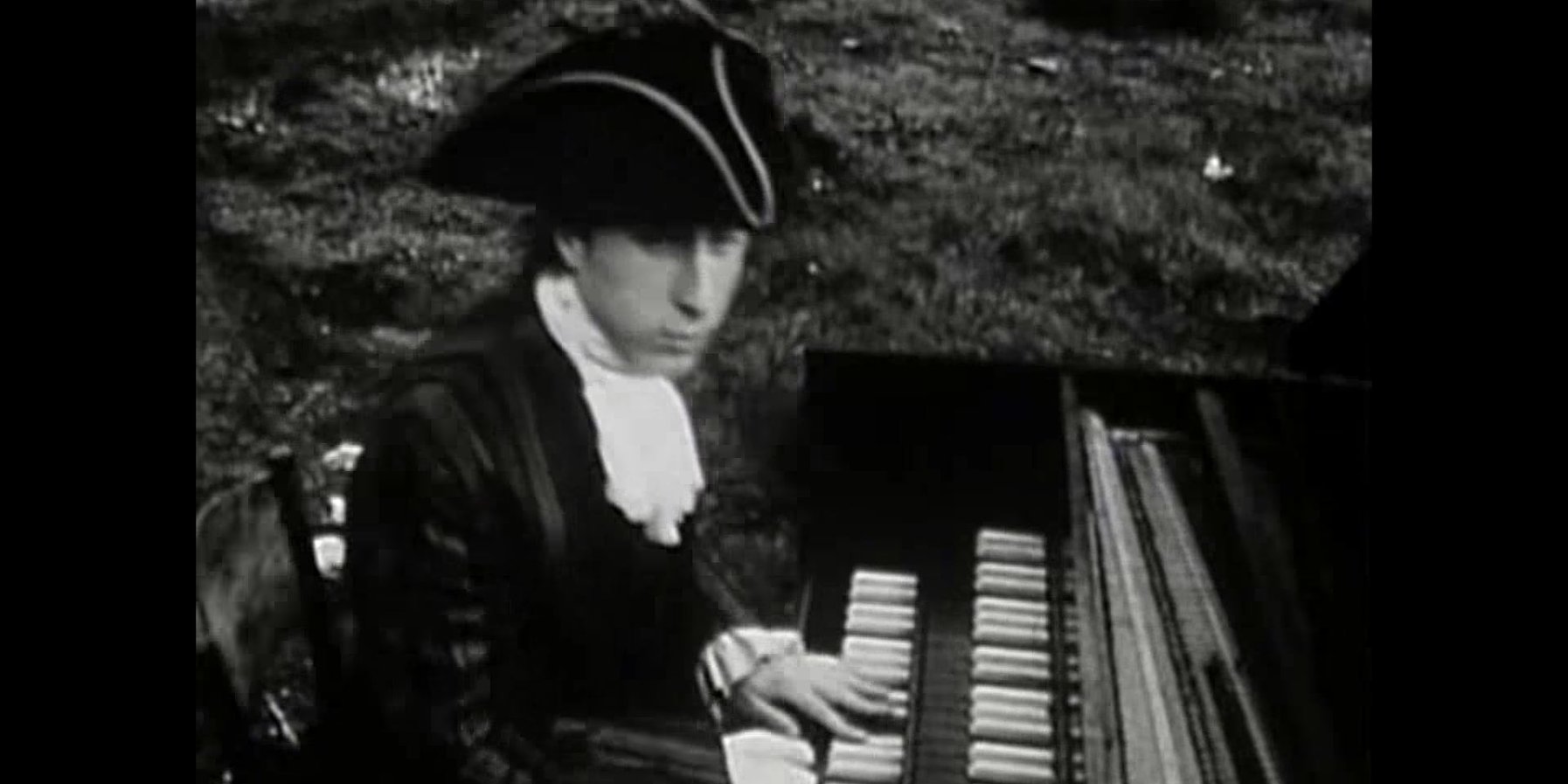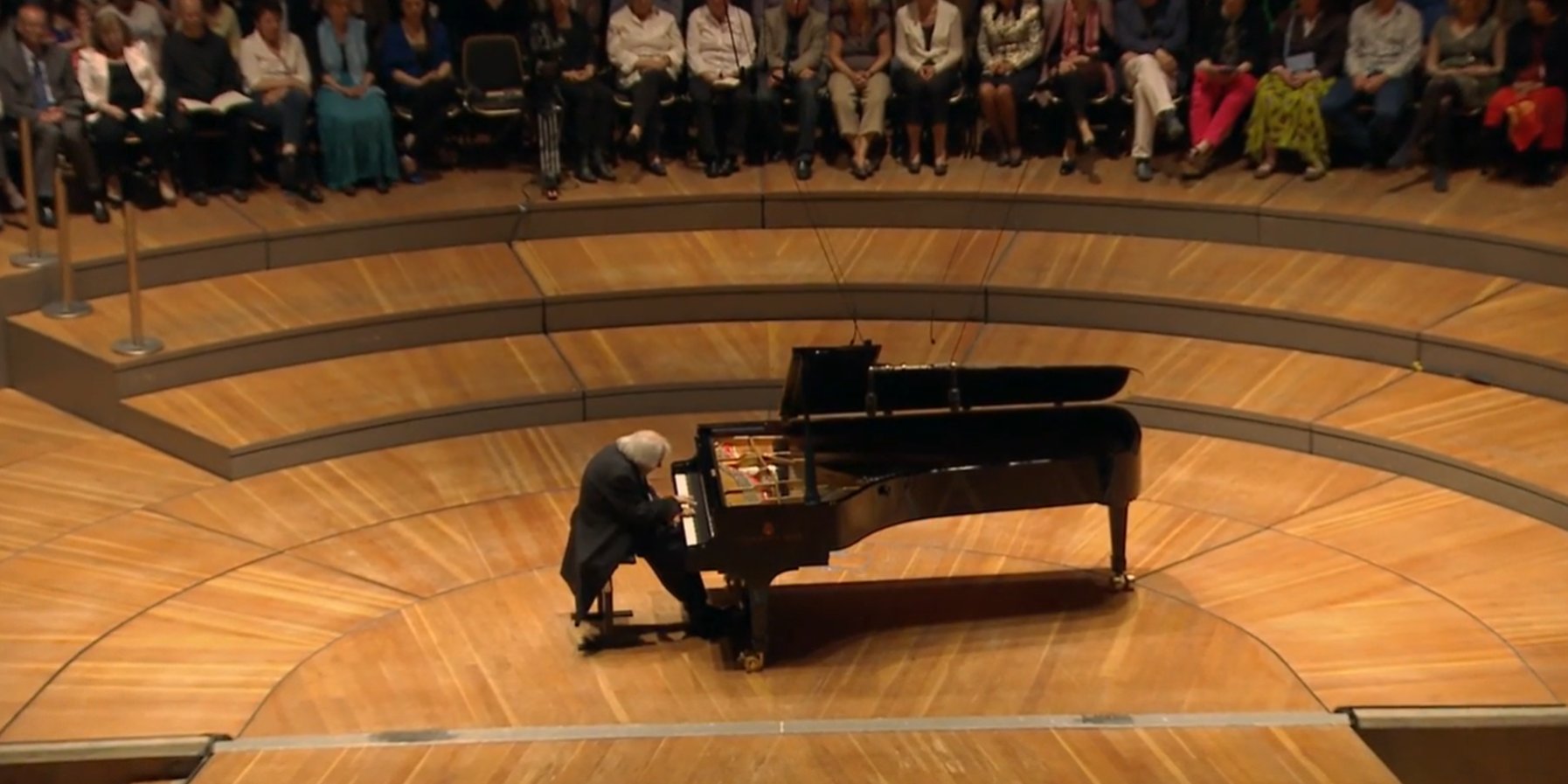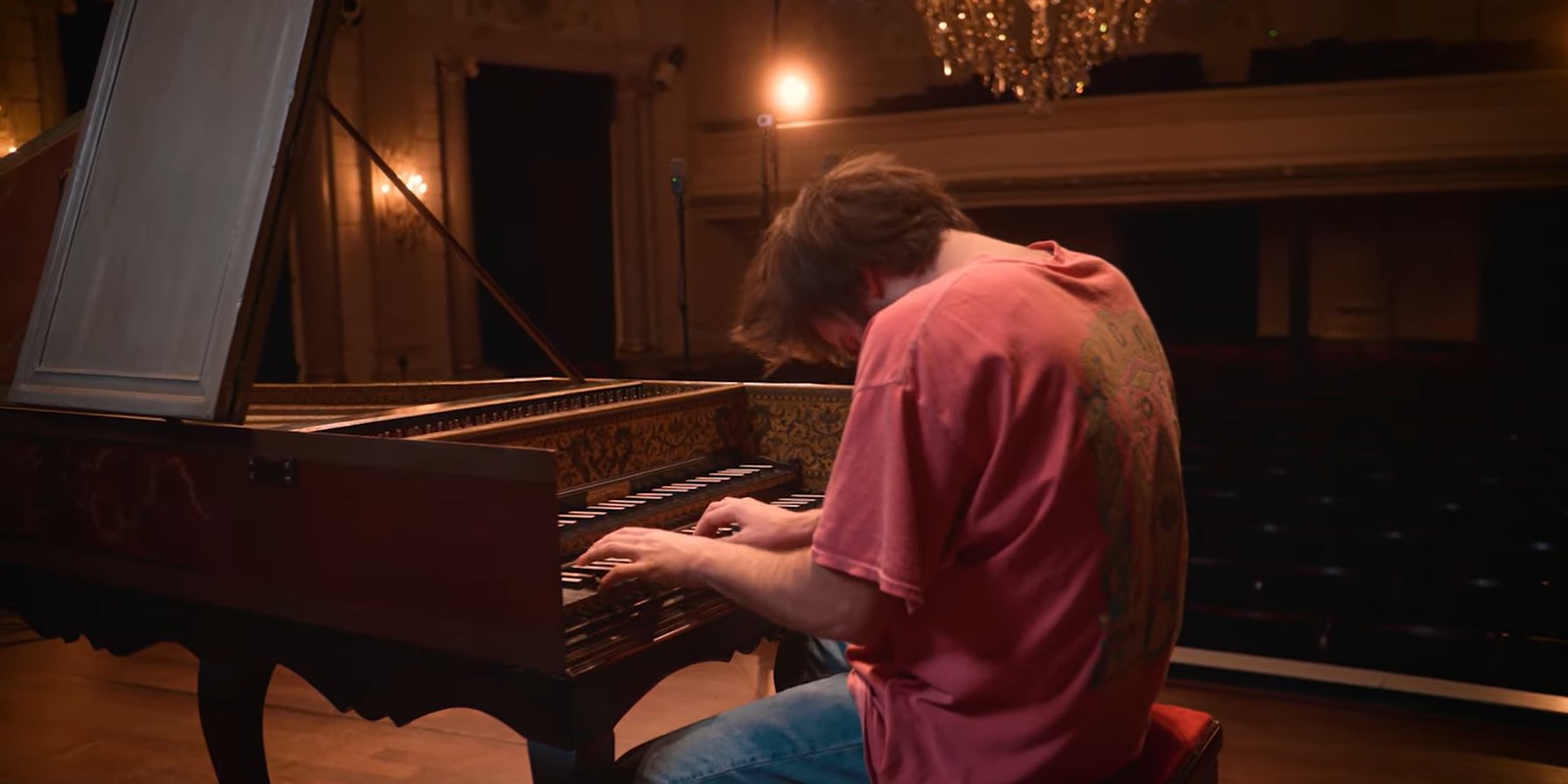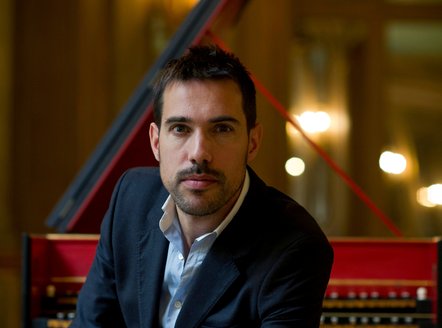The harpsichord is normally never far away when music from the Baroque period is concerned. Its light, convivial sound is characteristic of a whole musical era, and sets the tempo in a number of early music ensembles. That was not always the case over its long history: for a time, the harpsichord’s successor, the piano, made it look very old and superfluous – and it was almost forgotten. Then, with the revival of Baroque music in the twentieth century, the harpsichord made an impressive comeback, and even featured in the pop music of the 1960s. Today, the harpsichord is a vibrant instrument with a bright future thanks to young, talented musicians.

Spotlight »Harpsichord« :12.12.2025 – 1.6.2026
The harpsichord in the spotlight: 5 concerts at the Elbphilharmonie and Laeiszhalle, ranging from solo programmes to J.S. Bach's concerto for 4 harpsichords
HOW IT ALL BEGAN
The history of the harpsichord reaches back to the early Renaissance, with the first instruments built around the beginning of the fifteenth century. Between 1500 and 1750, the harpsichord – alongside the organ – was the most important keyboard instrument, and almost all the major composers of the age wrote works for it.
PLUCKING OR HAMMERING
The harpsichord was not the first keyboard instrument. The organ has been around since the age of antiquity, and the clavichord, in which the strings are struck by small metal blades, was also invented before the harpsichord. And yet the harpsichord was a real innovation. Before its invention, strings had only ever been plucked by fingers (e.g. the psalterium, a kind of lute), and this was the first time the plucking method was transferred to a keyboard instrument. When you press a key on the harpsichord, a jack springs up and plucks the metal strings with a quill. These quills are thorn-shaped plectrums – and were made from real quills in times past.

HAMBURG AS BAROQUE CENTRE
In the beginning, the most important centres for the harpsichord were the major Italian cities and the Flemish region around the trade city of Antwerp. Over time, however, more and more harpsichords were built in Germany, initially by organ builders as a side-line, then increasingly also by specialists. Hamburg played an important role in this development. The city was a vibrant cultural centre for northern Germany in the 17th and 18th centuries. A large number of instrument builders worked here, as did some of the most important composers of the age, and in 1678 the city became home to Germany’s first public opera house at Gänsemarkt.

THE CITY’S MOST FAMOUS HARPSICHORD
The Hamburg-based instrument builder Carl Conrad Fleischer was born in 1679 – around the same time as the three composers who would shape the history of German Baroque music: Georg Philipp Telemann (1681), Johann Sebastian Bach and Georg Friedrich Handel (both born in 1685). An exciting period for music, then – and a period in which instrument building was a highly respected profession.
Carl Conrad Fleischer’s harpsichords were already in great demand during his lifetime – today, they are priceless. One particularly beautiful instrument built in 1716 is housed in the Museum für Hamburgische Geschichte. The museum’s director purchased the harpsichord at a New York auction in 1978, finally bringing an instrument that had long been in the US back to its home city.

The 300-year-old harpsichord is still sometimes played at concerts. The instrument’s resonance board, keyboard and mechanism are all original, so it sounds just as Fleischer designed it. However, the ornamental painting has undergone changes over the course of the centuries.
WORKS FOR HARPSICHORD
For a long time, the harpsichord was the favoured keyboard instrument of major composers: apart from the organ, there was no alternative. As a result, there is an extensive body of works for the instrument. Antonio Vivaldi in Italy, Jean-Philippe Rameau in France and Henry Purcell in England – all the major composers of the age wrote pieces for the harpsichord.
Johann Sebastian Bach had a reputation as a true harpsichord virtuoso. He wrote several concertos for the harpsichord, and he even composed one for four harpsichords. Bach also composed a number of the solo works that are now usually played on piano for the harpsichord originally, for example the famous Goldberg Variations.

Das Alte Werk
Music from the treasure chests of centuries long past: the concert series at the Laeiszhalle.
THE PIANO’S INVENTION – THE END OF THE HARPSICHORD?
Despite the harpsichord’s great popularity, it had one major weakness compared to most other instruments. No matter whether the player laid into the keys forcefully or brushed them with great tenderness, the sound produced by the instrument always remained at the same volume – the mechanism underlying the instrument made it impossible to develop a dynamic playing style. Composers sometimes attempted to circumvent this limitation by indicating points in the score at which musicians could use gesture and body language to give their playing the required expressiveness.
Things would soon change. In 1698, the Italian instrument maker Bartolomeo Cristofori developed a new instrument and called it »arpicembalo che fà il piano e il forte« (harpsichord that can play loudly and quietly). In some languages the name »pianoforte« is still used to this day, in other languages it has been shortened to »piano«.

ALL PLUCKED OUT
This new instrument, with its dynamic hammer mechanism, gradually replaced the harpsichord. In Hamburg in 1788, Bach’s son C. P. E. Bach wrote a concerto in which he placed the »old« harpsichord and the »new« pianoforte side by side as solo parts.
But the harpsichord was increasingly made redundant, as clearly demonstrated by Ludwig van Beethoven’s famous piano sonatas. While the first few sonatas of the 32 were published as pieces »for harpsichord or pianoforte« (in order not to lose the custom of old harpsichord lovers), by the time Sonata No. 29 was published, at the latest, the pianoforte is the only instrument mentioned. The piece is still known as the »Hammerklavier Sonata« (Pianoforte Sonata) to this day. The golden era of the harpsichord was over.
THE COMEBACK
Many years would pass before musicians began to gradually rediscover an interest in the harpsichord and other instruments of the Baroque period. The first associations of early music were established at the beginning of the 20th century, and this movement gathered momentum after the Second World War. Large numbers of musicians turned their backs on the ossified music scene, and started researching the forgotten Baroque repertoire – doing so in a very practice-oriented way, using historic instruments to find the »original sound« of times past. The practice of »historically-informed performance«, which is still popular today, brought the harpsichord back onto concert stages.
Perhaps the greatest champion of the harpsichord’s revival was the Polish musician Wanda Landowska, who died in 1959. The French piano maker Pleyel built a special harpsichord model for Landowska, and this soon went into serial production. Great composers began writing new pieces for the instrument: Manuel de Falla dedicated a Concerto for Harpsichord and Orchestra to Landowska in 1926, and Francis Poulenc did the same in 1927.

THE HARPSICHORD POP OF THE 1960s
In the 1960s, this new enthusiasm for the rediscovered sounds of the harpsichord spilled over into the world of pop music. The Beatles’ producer George Martin was a fan of the instrument and he played it on the 1967 song »Fixing a Hole«.

The Yardbirds also embraced the retro trend. Not only did the harpsichord provide the right flavour for their hit »For Your Love« in 1965, the band also filmed a music video to match, in which they gather around the harpsichord dressed in Baroque style, with feathered hats and knight’s helmets.

THE HARPSICHORD TODAY
The harpsichord has its place in many early music ensembles. But the harpsichord also works as a solo instrument – as several up-and-coming young musicians are currently proving. One example is the Frenchman Jean Rondeau, who is bringing new splendour to the great harpsichord literature and bridging the gap to the here and now with his own compositions and jazz improvisations.
Cembalo-Schwerpunkt 2025/26 in der Elbphilharmonie
Rondeau is one of the musicians who will be performing at the Elbphilharmonie during the 2025/26 season as part of the »Harpsichord« focus. He will be playing music by composer Louis Couperin, who has been a part of his life since childhood. Two other harpsichord soloists will also be featured in the focus: French-American harpsichordist Justin Taylor combines J.S. Bach with Italian Baroque music, while Mahan Esfahani presents newer harpsichord music from the 20th and 21st centuries. Finally, to round off the series, the Accademia Bizantina, conducted by harpsichordist Ottavio Dantone, will perform several harpsichord concertos by J.S. Bach – including one for four harpsichords.
Text: Francois Kremer, last updated: 1 Aug 2025
Die Konzerte des Schwerpunkts »Cembalo«
- Elbphilharmonie Kleiner Saal
Ensemble Masques & Olivier Fortin, Harpsichord
Rameau: Pièces de clavecin en concert Nos. 1, 3 & 5 / Couperin: Concert Royal Nos. 1 & 2 / Works by Antoine Forqueray and Michel Corrette
Past Concert - Elbphilharmonie Kleiner Saal
»400 Years of Louis Couperin«
- Elbphilharmonie Kleiner Saal
»Bach & Italy« – FAST LANE
- Elbphilharmonie Kleiner Saal
Works for Solo Harpsichord by György Ligeti, Luc Ferrari, Hans Werner Henze, Misolav Srnka & others
- Laeiszhalle Großer Saal
Accademia Bizantina / Ottavio Dantone
Bach: Harpsichord Concerti BWV 1063–1065 & Brandenburg Concerto No. 5 – Das Alte Werk












